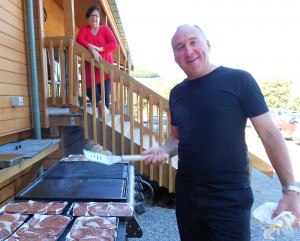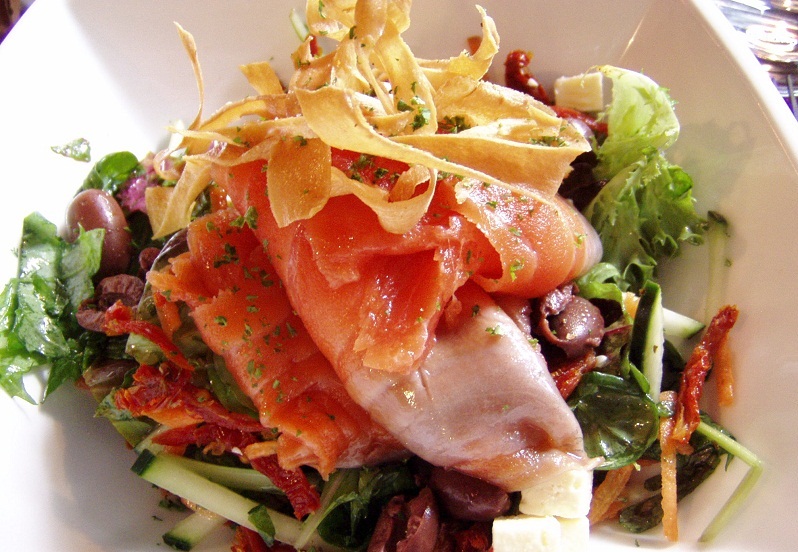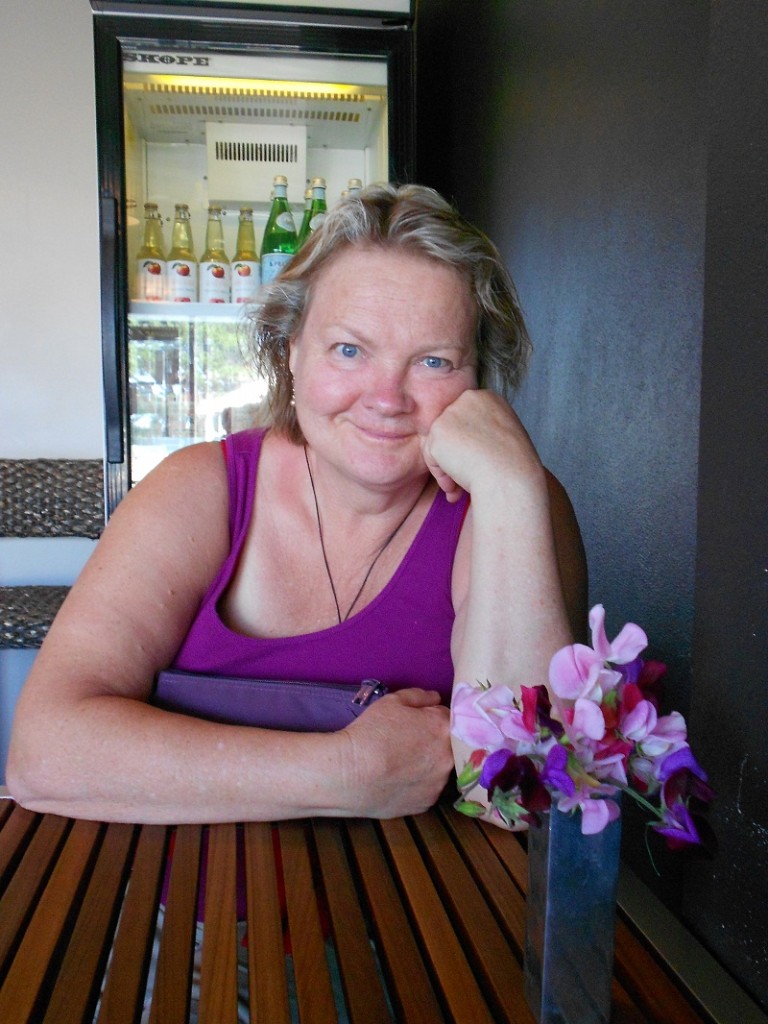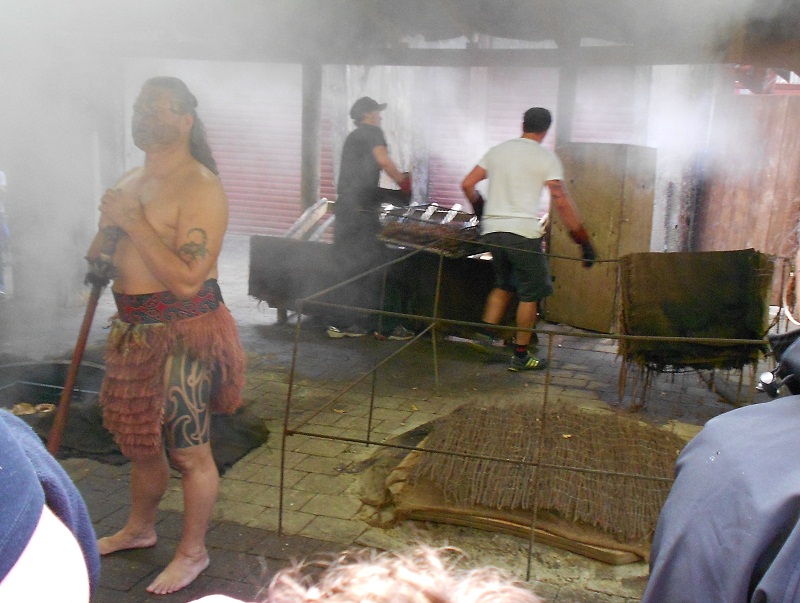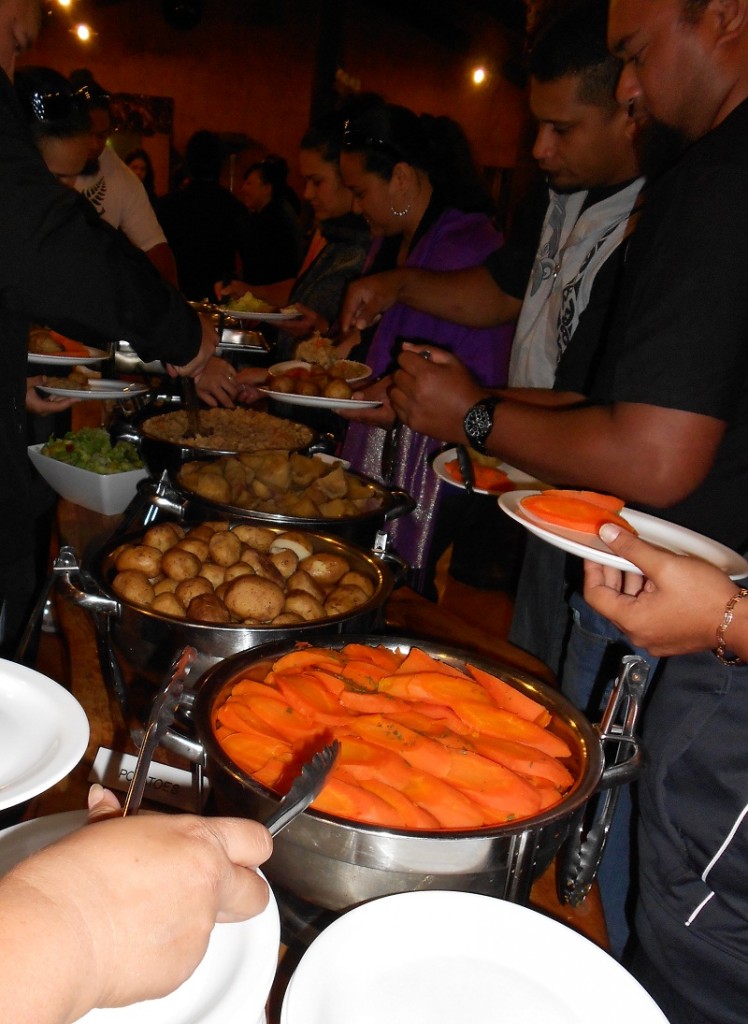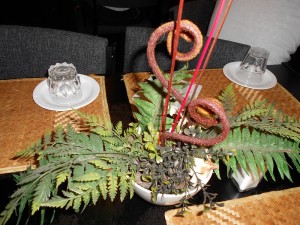New Zealand as Experienced through Food
 This is a fertile land, and the animals often free-range, so create high quality food.
This is a fertile land, and the animals often free-range, so create high quality food.
I was blown away at the orange color of the egg yolks!
By the time I thought to take a picture, I found these and they are not even as dark as most of the egg yolks that I had eaten
 The next thing I became enamored with was a bottled carbonated drink: lemon, lime and bitters. It is bubbly and not too sweet, very refreshing. I found it made by several companies, one was Schwepps. I was willing to pay the $4.90 to $5.90 tourist price for a bottle for the taste.
The next thing I became enamored with was a bottled carbonated drink: lemon, lime and bitters. It is bubbly and not too sweet, very refreshing. I found it made by several companies, one was Schwepps. I was willing to pay the $4.90 to $5.90 tourist price for a bottle for the taste.
Now, I have never seen this back home, but I know a way to make it in my style. I will get plain sparkling water, squeeze fresh lemon and lime in it, and then add bitters.
Bitters are an old Naturopathic way of stimulating digestion – the most important herb in it being Gentian. Bitters, also known as Angostura, are also used in some mixed alcoholic drinks to add a subtle layer of flavor. I found that it functions both ways in this drink. So, add bitters from a tincture bottle from my friend, Monica Rude, the Desert Woman. Hers has Green Gentian, Mahonia, Hops, Yellow Dock, and Fennel Seed. Drink before a meal – ahhhh.
 You have probably heard that New Zealand is the land of 4 million people and 40 million sheep. So it is not surprising that lamb dishes are served all over.
You have probably heard that New Zealand is the land of 4 million people and 40 million sheep. So it is not surprising that lamb dishes are served all over.
The first night in Dunedin, we found a middle eastern restaurant for some light fare. This is my lamb meal, patties on a salad.
Just right for a late night. And it was still light at 9 PM when we left the restaurant!
Cattle are also starting to be raised in New Zealand, with some good quality local beef. On the last evening of the Ishaya retreat, we were treated to local hamburgers. They even accommodated with a gluten-free option for the bun. Here is Mahakala at the grill.
Now, I don’t usually eat hamburgers back home, I just don’t have a taste for them. My experience of the sirloin-quality Kiwi hamburgers was really fantastic. I loved it! Juicy and flavorful.
But be careful of the Kiwi tomato condiment. I would not call it ketchup. It was tomato with spices, the most predominant being cloves. I tried it but could not get used to it.
 Speaking of gluten-free, most restaurants and cafes, even bars, noted their gluten-free options.
Speaking of gluten-free, most restaurants and cafes, even bars, noted their gluten-free options.
In Christchurch, here a coffee stand that had wonderful food, even gluten-free. See if you can read the descriptions.
What is different than in America, is that when you walk in most eating establishments, you place your order at the bar and pay for it right away. There is no tipping, as wait staff start at $14 an hour! We talked to one waitress from Canada, who is enjoying working in New Zealand for several years.
As New Zealand is islands, it is a no-brainer that there are lots of fish offerings. Here are ordinary ones from a lunch spot in Dunedin: salmon salad and fried fish and chips.
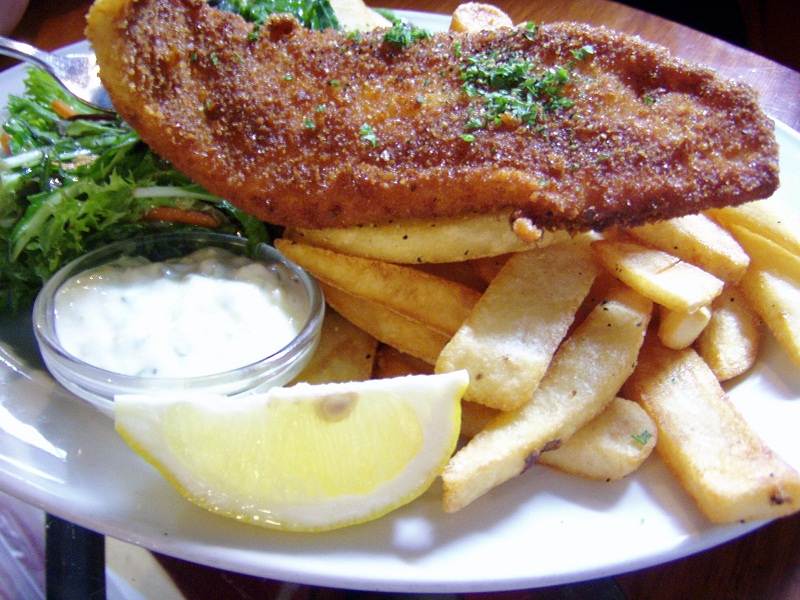 In Kaikoura, a popular tourist beach on the east coast of the south island, there is a world-famous seafood barbeque on the beach. We ended up there on our walk looking for a swimming beach. By that time, we were famished, and decided to be adventurous.
In Kaikoura, a popular tourist beach on the east coast of the south island, there is a world-famous seafood barbeque on the beach. We ended up there on our walk looking for a swimming beach. By that time, we were famished, and decided to be adventurous.
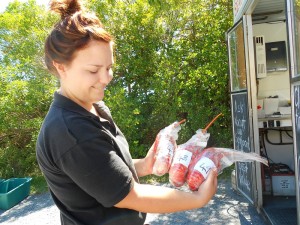
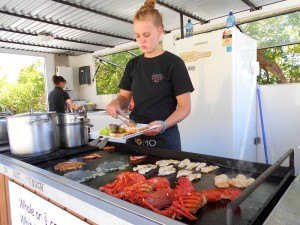 This is the sampler plate of the native seafood: Paua fritter, Crayfish fritter, Whitebait fritter, grilled Elephant fish, mussels, and scallops, served with rice and bread and salad.
This is the sampler plate of the native seafood: Paua fritter, Crayfish fritter, Whitebait fritter, grilled Elephant fish, mussels, and scallops, served with rice and bread and salad.

 Unfortunately, we chalked this one up to experience, as neither of us enjoyed the different tastes very much. I did like the mild tastes – crayfish and scallops. I found the mussels to taste like seawater, with a very chewy texture. And chew and chew and chew . . . until I gave up and spit it out.
Unfortunately, we chalked this one up to experience, as neither of us enjoyed the different tastes very much. I did like the mild tastes – crayfish and scallops. I found the mussels to taste like seawater, with a very chewy texture. And chew and chew and chew . . . until I gave up and spit it out.
So, we defaulted to an American staple – pizza. At the Black Rabbit, they offered a gluten-free crust, so I suggested going there. Here is my travel and dinner partner waiting for our order. Nothing special, but a change of pace.
Finally, in Rotorura, we took the Tamaki tour of Maori culture, That included a dinner prepared in the traditional way: buried in the ground to cook, then pulled up to be served. Let me explain. This may sound like the Hawaiian luau, but there is a difference. The land around Rotorura where the Maori settled is very active with geothermal energy. Just under the surface of the ground is hot water, bubbling mud and such. So, the Maori used that property of the earth to do their cooking. On the tour, we were called to the cooking area to witness the hauling up of the crates of cooked food.
Then they prepared it and set it out in the dining hall. What a spread!
Root vegetables like carrots, potatoes, and the native kumara joined chicken and mussels and a variety of side dishes. Delicious!
My mind was busy scheming how I could get kumara back to the USA. That would be a welcome staple, and alternative to sweet potatoes.
The table was set nicely, and we had lovely dinner companions from Canada.
Back home, I am finding that I wish to eat more simply, and look for the high quality ingredients I had a taste of in New Zealand.
Leave your comments of what you would like to try. Or if you have been to New Zealand, please share your favorites!
WANT TO USE THIS ARTICLE IN YOUR NEWSLETTER OR WEB SITE? You can, as long as you include this complete blurb with it:
“Naturopathic Physician Dr. Cheryl Kasdorf is a doctor who listens and has answers with a natural approach that works. She is known as the go-to person to get back your get-up-and-go when it is gone, gone, gone. Get your FREE gift “Dr. Kasdorf’s Health Secrets for Feeling & Looking Great” at drcherylkasdorf.com


